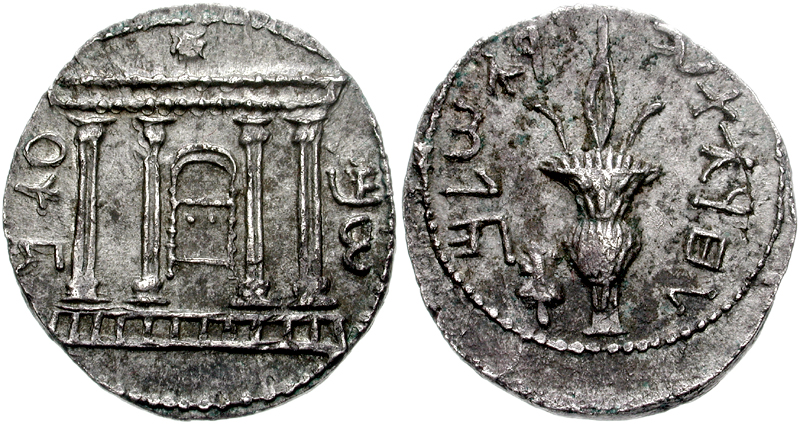|
Shalmaneser V
Shalmaneser V (Neo-Assyrian cuneiform: , meaning "Salmānu is foremost"; Biblical Hebrew: ) was the king of the Neo-Assyrian Empire from 727 BC to his deposition and death in 722 BC. Though Shalmaneser V's brief reign is poorly known from contemporary sources, he remains known for the conquest of Samaria (ancient city), Samaria and the fall of the Kingdom of Israel (Samaria), Kingdom of Israel, though the conclusion of that campaign is sometimes attributed to his successor, Sargon II, instead. Shalmaneser V is known to have campaigned extensively in the lands west of the Assyrian heartland, warring not only against the Israelites, but also against the Phoenician city-states and against kingdoms in Anatolia. Though he successfully annexed some lands to the Assyrian Empire, his campaigns resulted in long and drawn-out sieges lasting several years, some being unresolved at the end of his reign. The circumstances of his deposition and death are not clear, though they were likely vio ... [...More Info...] [...Related Items...] OR: [Wikipedia] [Google] [Baidu] |
Salmānu
Shulmanu or Shulman (Assyrian Akkadian: ''Salmānu'', Babylonian language, Babylonian Akkadian: ''Šulmānu'') was an Ancient Mesopotamian religion, ancient Mesopotamian deity. The deity is only ever recorded as having been worshipped by the ancient Assyria, Assyrians, in contrast to many other deities of the Mesopotamian pantheon which were more universal, and was particularly popular in the Middle Assyrian period. The deity's name was incorporated into the name Shalmaneser, assumed as a regnal name by five Assyrian kings from Shalmaneser I (1274–1245 BC) to Shalmaneser V (727–722 BC). The literal translation of the name ''Salmānu'' is "friendly one"; it is possible that Shulmanu was a friendly manifestation of the Assyrian national deity Ashur (god), Ashur. References * {{Cite book, last=Yamada, first=Keiko, title="Now It Happened in Those Days": Studies in Biblical, Assyrian, and Other Ancient Near Eastern Historiography Presented to Mordechai Cogan on His 75th Birthd ... [...More Info...] [...Related Items...] OR: [Wikipedia] [Google] [Baidu] |
King Of Assyria
The king of Assyria (Akkadian language, Akkadian: , later ) was the ruler of the ancient Mesopotamian kingdom of Assyria, which was founded in the late 21st century BC and fell in the late 7th century BC. For much of its early history, Assyria was little more than a city-state, centered on the city Assur, but from the 14th century BC onwards, Assyria rose under a series of warrior kings to become one of the major political powers of the Ancient Near East, and in its last few centuries it dominated the region as the largest empire the world had seen thus far. Ancient Assyrian history is typically divided into the Old Assyrian Empire, Old, Middle Assyrian Empire, Middle and Neo-Assyrian Empire, Neo-Assyrian periods, all marked by ages of ascendancy and decline. The ancient Assyrians did not believe that their king was divine himself, but saw their ruler as the vicar of their principal deity, Ashur (god), Ashur, and as his chief representative on Earth. In their worldview, Assyria rep ... [...More Info...] [...Related Items...] OR: [Wikipedia] [Google] [Baidu] |
Assyrian Cuneiform U12220 MesZL 552
Assyrian may refer to: * Assyrian people, an indigenous ethnic group of Mesopotamia. * Assyria, a major Mesopotamian kingdom and empire. ** Early Assyrian Period ** Old Assyrian Period ** Middle Assyrian Empire ** Neo-Assyrian Empire ** Post-imperial Assyria * Assyrian language (other) * Assyrian Church (other) * SS ''Assyrian'', several cargo ships * ''The Assyrian'' (novel), a novel by Nicholas Guild * The Assyrian (horse), winner of the 1883 Melbourne Cup See also * Assyria (other) * Syriac (other) * Assyrian homeland, a geographic and cultural region in Northern Mesopotamia traditionally inhabited by Assyrian people * Syriac language, a dialect of Middle Aramaic that is the minority language of Syrian Christians * Upper Mesopotamia * Church of the East (other) Church of the East, also called ''Nestorian Church'', an Eastern Christian denomination formerly spread across Asia, separated since the schism of 1552. Church of the E ... [...More Info...] [...Related Items...] OR: [Wikipedia] [Google] [Baidu] |
Anatolia
Anatolia (), also known as Asia Minor, is a peninsula in West Asia that makes up the majority of the land area of Turkey. It is the westernmost protrusion of Asia and is geographically bounded by the Mediterranean Sea to the south, the Aegean Sea to the west, the Turkish Straits to the northwest, and the Black Sea to the north. The eastern and southeastern limits have been expanded either to the entirety of Asiatic Turkey or to an imprecise line from the Black Sea to the Gulf of Alexandretta. Topographically, the Sea of Marmara connects the Black Sea with the Aegean Sea through the Bosporus and the Dardanelles, and separates Anatolia from Thrace in Southeast Europe. During the Neolithic, Anatolia was an early centre for the development of farming after it originated in the adjacent Fertile Crescent. Beginning around 9,000 years ago, there was a major migration of Anatolian Neolithic Farmers into Neolithic Europe, Europe, with their descendants coming to dominate the continent a ... [...More Info...] [...Related Items...] OR: [Wikipedia] [Google] [Baidu] |
Phoenicia
Phoenicians were an Ancient Semitic-speaking peoples, ancient Semitic group of people who lived in the Phoenician city-states along a coastal strip in the Levant region of the eastern Mediterranean, primarily modern Lebanon and the Syria, Syrian coast. They developed a Maritime history, maritime civilization which expanded and contracted throughout history, with the core of their culture stretching from Arwad in modern Syria to Mount Carmel. The Phoenicians extended their cultural influence through trade and colonization throughout the Mediterranean, from Cyprus to the Iberian Peninsula, evidenced by thousands of Canaanite and Aramaic inscriptions, Phoenician inscriptions. The Phoenicians directly succeeded the Bronze Age Canaanites, continuing their cultural traditions after the decline of most major Mediterranean basin cultures in the Late Bronze Age collapse and into the Iron Age without interruption. They called themselves Canaanites and referred to their land as Canaan, but ... [...More Info...] [...Related Items...] OR: [Wikipedia] [Google] [Baidu] |
Kingdom Of Israel (Samaria)
The Kingdom of Israel ( ), also called the Northern Kingdom or the Kingdom of Samaria, was an History of ancient Israel and Judah, Israelite kingdom that existed in the Southern Levant during the Iron Age. Its beginnings date back to the first half of the 10th century BCE. It controlled the areas of Samaria, Galilee and parts of Transjordan (region), Transjordan; the former two regions underwent a period in which a large number of new settlements were established shortly after the kingdom came into existence. It had four capital cities in succession: Shiloh (biblical city), Shiloh, Shechem, Tirzah (ancient city), Tirzah, and the Samaria (ancient city), city of Samaria. In the 9th century BCE, it was ruled by the Omrides, Omride dynasty, whose political centre was the city of Samaria. According to the Hebrew Bible, the territory of the Twelve Tribes of Israel was once amalgamated under a Kingdom of Israel (united monarchy), Kingdom of Israel and Judah, which was ruled by the Ho ... [...More Info...] [...Related Items...] OR: [Wikipedia] [Google] [Baidu] |
Samaria (ancient City)
Samaria ( ; ; ; ) was the capital city of the Kingdom of Israel (Samaria), Kingdom of Israel between and . It is the namesake of Samaria, a historical region bounded by Judea to the south and by Galilee to the north. After the Assyrian captivity, Assyrian conquest of Israel, Samaria was annexed by the Neo-Assyrian Empire and continued as an administrative centre. It retained this status in the Neo-Babylonian Empire and the Achaemenid Empire, Achaemenid Persian Empire before being destroyed during the Wars of Alexander the Great. Later, under the hegemony of the Roman Republic and the subsequent Roman Empire, the city was rebuilt and expanded by the Jewish king Herod the Great, who also fortified it and renamed it "Sebastia, Nablus, Sebastia" in honour of the Roman emperor Augustus. The ancient city's hill is where the Municipality (Palestinian Authority), modern Palestinian village, retaining the Roman-era name Sebastia, is situated. The local archeological site is jointly ad ... [...More Info...] [...Related Items...] OR: [Wikipedia] [Google] [Baidu] |
Biblical Hebrew
Biblical Hebrew ( or ), also called Classical Hebrew, is an archaic form of the Hebrew language, a language in the Canaanite languages, Canaanitic branch of the Semitic languages spoken by the Israelites in the area known as the Land of Israel, roughly west of the Jordan River and east of the Mediterranean Sea. The term 'Hebrew' was not used for the language in the Hebrew Bible, which was referred to as 'language of Canaan' or 'Judean', but it was used in Koine Greek and Mishnaic Hebrew texts. The Hebrew language is attested in inscriptions from about the 10th century BCE, when it was almost identical to Phoenician language, Phoenician and other Canaanite languages, and spoken Hebrew persisted through and beyond the Second Temple period, which ended in 70 CE with the siege of Jerusalem (70 CE), siege of Jerusalem. It eventually developed into Mishnaic Hebrew, which was spoken until the 5th century. The language of the Hebrew Bible reflects various stages of ... [...More Info...] [...Related Items...] OR: [Wikipedia] [Google] [Baidu] |
University Of Pennsylvania
The University of Pennsylvania (Penn or UPenn) is a Private university, private Ivy League research university in Philadelphia, Pennsylvania, United States. One of nine colonial colleges, it was chartered in 1755 through the efforts of founder and first president Benjamin Franklin, who had advocated for an educational institution that trained leaders in academia, commerce, and public service. The university has four undergraduate schools and 12 graduate and professional schools. Schools enrolling undergraduates include the College of Arts and Sciences, the University of Pennsylvania School of Engineering and Applied Science, School of Engineering and Applied Science, the Wharton School, and the University of Pennsylvania School of Nursing, School of Nursing. Among its graduate schools are its University of Pennsylvania Law School, law school, whose first professor, James Wilson (Founding Father), James Wilson, helped write the Constitution of the United States, U.S. Cons ... [...More Info...] [...Related Items...] OR: [Wikipedia] [Google] [Baidu] |





